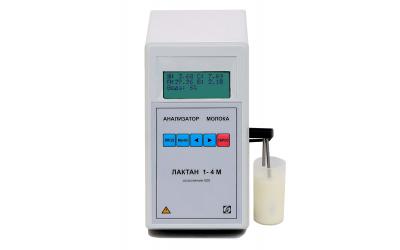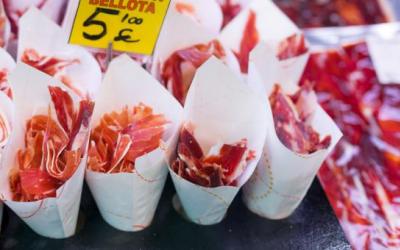Food prices may return to normal in spring-summer 2022

Normalization of world prices for energy products ( oil , gas, coal) and food is possible in the spring or summer of 2022, follows from a study by the Analytical Credit Rating Agency (ACRA). Now, according to the company's analysts, they are partly due to one-time or short-term supply-side factors. “The current price level may constrain global economic activity in the short term, slow down economic recovery after the pandemic, and is most dangerous for countries importing natural resources,” the ACRA report says.
The agency's analysts also believe that in the baseline scenario, the average annual inflation in RUSSIA in 2022 will drop to 5.5-6%, and the December figure may reach 4-4.5% by December, approaching the target level. In this regard, throughout most of 2022, the monetary policy of the Bank of Russia will be quite tight, but in the second half of the year it is quite possible to ease it quickly. The persistence of high inflationary expectations amid normalization of inflation, as well as the realization of new global or local shocks on the supply side, can lead to an increase in the duration of the period of tight monetary policy.
“As regards the dynamics of world food prices, unfortunately, I cannot agree with ACRA,” says Daria Snitko, HEAD of the Center for Economic Forecasting at Gazprombank. According to her, the current wave of appreciation of all types of agricultural raw materials in the world is not caused by a classic supply shock: both in agricultural crops and in processed products, production grew in 2020-2021. “Of course, both the panic at the beginning of the pandemic, dictated by considerations of the food security of importing countries, and the disruption of supply chains, which, to a lesser extent than in finished products, but also took place in global food trade, led to a decrease in the stocks of exporters,” Snitko commented.
The determining factor will be how producers will respond to rising world prices: by expanding or reducing the area under the main agricultural crops, she continues. While in Russia there is a decrease in the sowing of winter crops, the backlog is about 950 thousand hectares compared to the same date last year. Plans for the spring sowing campaign will be affected by an increase in the cost of agricultural production, caused by an increase in the cost of fertilizers, labor and other resources. According to Snitko, price corrections on the agricultural market should be expected no earlier than mid-summer, when there will be adequate yield estimates in the northern hemisphere, and then only if the weather does not interfere, and the increase in production costs does not cause violations in the cultivation of agricultural crops.
In the near future, inflation and prices for almost all goods, especially exchange-traded goods, will be determined by pandemic factors: lockdowns, new waves and vaccination rates, says Georgy Ostapkovich, DIRECTOR of the HSE Center for Market Research. According to him, force majeure events (pandemics, local wars, man-made disasters, etc.) have always led to higher prices. “We live in a zone of very high uncertainty. It is extremely difficult to say how inflation will behave until the end of next year,” he adds.
Now the Central Bank is raising the key rate, and, according to economic theory, this will cause a decrease in lending, which means that demand will fall, and prices will follow it. “The results of this maneuver are not immediately visible <...>, because all organizations and people are still paying at the old contract prices. The effect of the decisions of the Central Bank regarding the key rate comes only after four or five quarters, and this is just about the middle - closer to the autumn of next year, commented Ostapkovich. - All crises are cyclical, they end sooner or later, and there will definitely be a turning point, but it's hard to say when. I would agree with ACRA’s inflation forecasts, this is also within the framework of the Central Bank’s target for the next year.”
Georgy Ostapkovich, Director of the HSE Center for Market Research
Inflation is grief, not trouble. In the fat years of 2003-2008, when GDP growth averaged 6.5%, inflation did not fall below 10%. And everyone was fine then. No one even knew who was in charge of the Central Bank, Rosstat. And why? Because revenues grew by 12-13% per year. If they were still growing like this, then no one would remember about this inflation of 8%. So the problem is income, not inflation.
If next year there are no serious weather disasters, and the new harvest is at a high level, then food prices will fall, says Dmitry Rylko, director general of the Institute for Agricultural Market Studies. “But it must be remembered that thanks to inflation, commodity prices have risen sharply, and so much so that, I think, prices will no longer return to our usual levels and will be significantly higher than the values from which they started in the “bright” covid-19 future,” he commented. In addition, the expert doubts that next year inflation will be at the level of 4-4.5%.
Investments in the FoodTech market in 2020 exceeded $30 billion - Igor Vdovin
Director of the RANEPA Center for Agricultural Policy Natalya Shagaida says she would like to believe in ACRA's forecast. “But there are many factors in the market. For example, who would have thought that CHINA imports not only the grain that was additionally supplied to the foreign market in the 2020/21 season, but also more than this increase? Usually, China’s high demand is explained by the fact that the number of pigs was being restored there, but the republic imported more last agricultural year than it was when the country was not yet affected by epizootic problems in pig breeding,” Shagaida commented.
Read together with it:
- An HSE expert reported on the "evolution of inequality" in access to healthcare.An HSE researcher analyzed Russians' access to healthcare over a ten-year period. In 2021, the influence of financial factors became noticeable for the first time: low income reduces the likelihood of visiting a DOCTOR.Over the ten years from 2011 to 2021, the number of Russians requiring medical care but not receiving it remained virtually unchanged, according to a study by Lyudmila Zasimova, hea...
- The IEA sees a risk of a decline in oil production in Russia due to sanctions.The IEA sees a risk of reduced oil production in RUSSIA due to US sanctions , but maintains its production forecast. According to the IEA, Russian oil exports will remain unchanged.There is a "significant downside risk" to Russia's oil production forecast due to US sanctions, the International Energy Agency (IEA) said in a report.BLOOMBERG . The agency's experts believe that the latest US sanction...
- UniCredit заявил о галактических усилиях из-за санкций против РоссииUniCredit старается не нарушить «более 15 тыс. санкций», а также не «совершать ошибки», которые позволят изъять его активы в России, заявил гендиректор. После начала военной операции банк начал рассматривать возможность ухода Итальянский банк UniCredit прилагает «галактические усилия», пытаясь соблюсти международные санкции в отношении своего российского подразделения. Об этом заявил генеральный д...
- "Коллективы АПК способны решать любые задачи даже в непростых условиях". Назаров о заслугах сельхозпроизводителейЮрий Назаров 13 ноября, Минск. Обеспечение продовольственной безопасности страны - большое достижение трудовых коллективов аграриев, отметил управляющий делами Президента Республики Беларусь Юрий Назаров на торжественной церемонии награждения государственными и иными наградами работников АПК Управления делами Президента Республики Беларусь, передает корреспондент БЕЛТА. Торжественная церемония наг...
- Sustainable growth of the food and processing industries in BashkortostanIlshat Fazrakhmanov, Deputy Prime Minister andThe regional Minister of Agriculture noted that the development of these industries provides the population with essential food products and contributes to increased exports. Since 2020, agricultural exports from the region have doubled. Since the beginning of 2......
- Колумбия: При экспорте скота сертификация и прослеживаемость больше не являются необязательнымиВысококачественное животноводство, особенно при экспорте, требует сертификации и прослеживаемости. Это необходимые условия для выхода и конкуренции на многих международных рынках, а также на некоторых всё более требовательных внутренних рынках. Колумбийское животноводство не является исключением из этих правил, и, хотя предстоит ещё многое сделать, всё большее число ферм и компаний внедряют эти ме...




























































